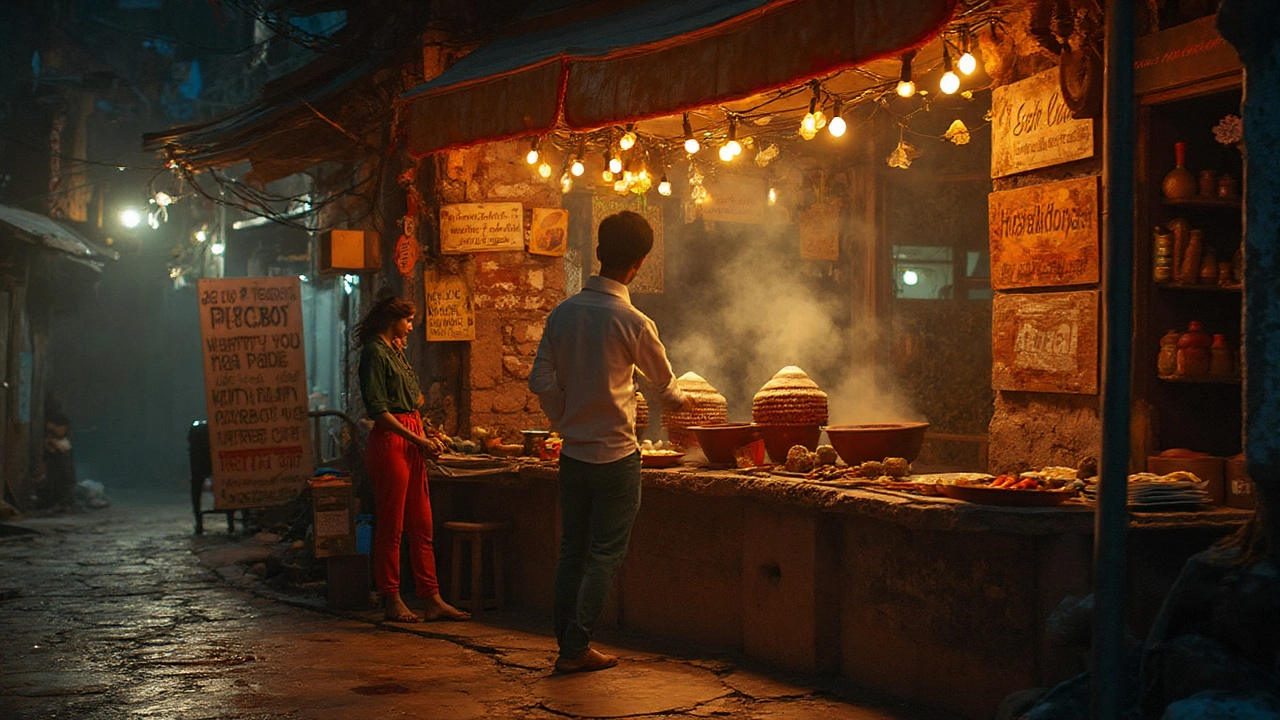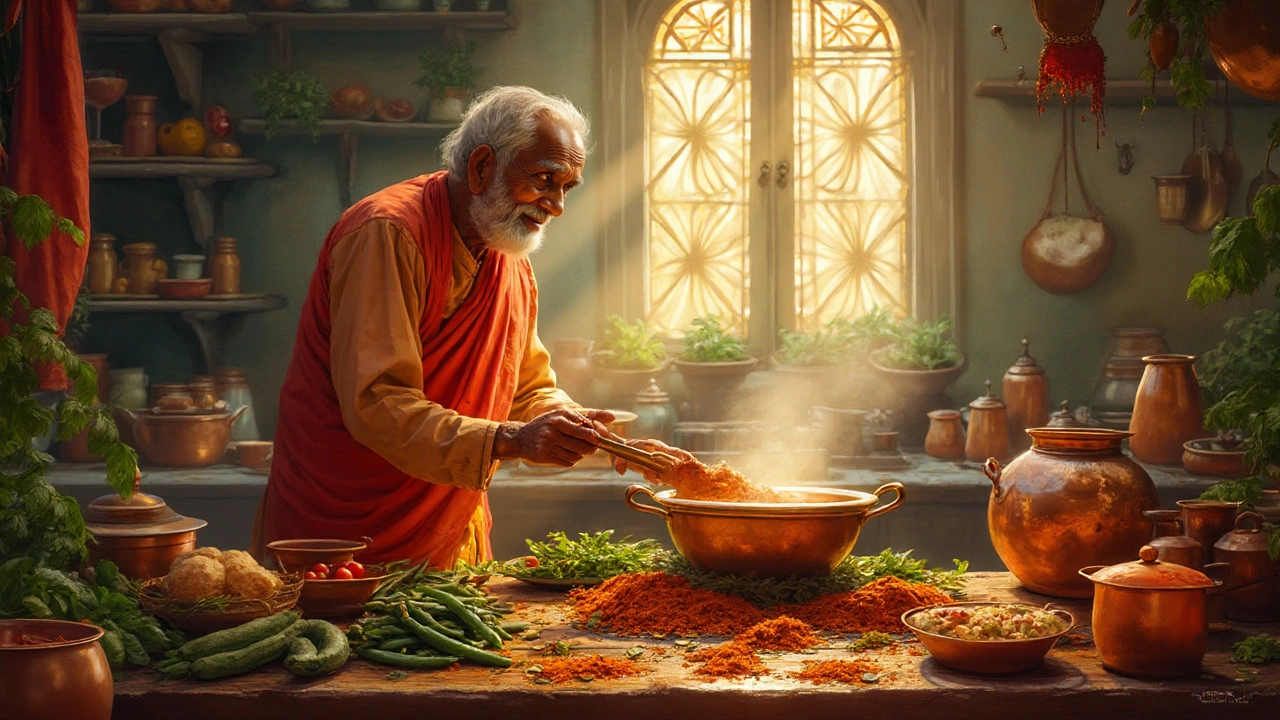If you ask ten different people across India about the best vegetarian dish, you’ll end up with ten passionate, wildly different answers. This isn’t a debate that gets settled easily—families square off, street vendors boast, chefs hold their secrets tightly. Let’s get one thing clear: India’s love for vegetarian food isn’t just about avoiding meat. It’s about a rainbow explosion of flavors, textures, and centuries of tradition all squeezed onto one crowded thali. And the best part? You don’t need to be vegetarian to become obsessed.
A Land Where Veg Isn’t Just an Option, It’s the Main Star
India isn’t messing around when it comes to vegetarian cooking. Over 30% of Indians are vegetarian—that’s more than 400 million people—and that number doesn’t even count all the carnivores who still order veg for the taste. From the snowy Himalayas to the sun-baked beach towns of the south, veg dishes form the core of festivals, street food, lazy Sunday lunches, and even wedding feasts.
Why is this the case? History and religion play a big part: Hinduism, Jainism, and Buddhism all promote non-violence, and eating veg is seen by some as part of that bigger picture. But honestly, try crushing into a packed restaurant in Delhi at lunchtime, where paneer tikka sizzles on skewers and bowls of dal makhani bubble on open flames—religion or not, the food is just irresistible. Some classic Indian dishes that got their start in royal kitchens, like navratan korma and shahi paneer, were basically invented so vegetarian kings wouldn’t feel left out at the feast.
It isn’t just home cooks who innovate, either. Chefs across Mumbai, Bangalore, and Chennai compete to put fresh spins on tradition. I’m talking about things like ghee-roasted jackfruit ‘pulled pork’ sliders and beetroot tikkis with mango chutney. Even city street food has its own legends—from vada pav in Maharashtra to chole bhature in Punjab. And yet, the best vegetarian Indian dish often comes down to childhood nostalgia—a whiff of tadka on fresh dal, or the crisp crackle of a masala dosa at a roadside stall.
The Paneer Predicament – Can Anything Beat the Power of Cheese?
This question stirs up strong opinions, but let's be real—paneer is everywhere, and for good reason. Walk into any Indian restaurant and look at the menu. Paneer butter masala, palak paneer, paneer tikka, and an endless parade of recipes riff on that chewy, mild, homemade cheese. It’s the protein-packed hero for millions and the ultimate crowd-pleaser at family dinners. In fact, a story from 1975 in Lucknow’s famous Tunday Kababi tells how a vegetarian Maharani convinced chefs to develop new vegetarian dishes so she could eat with everyone at the table. Paneer was already the secret weapon, loved because it soaks up curry flavors and stands firm in the frying pan.
Still, paneer’s not the only hero. Dishes like Baingan Bharta (smoky mashed eggplant), Dal Tadka (aromatic lentils) or even the South Indian dosa (fermented rice and lentil crepe stuffed with spiced potatoes) all have cult followings. Sometimes, veggie power comes from the humblest places—the crunch of a bhindi fry (okra), a scoop of creamy kofta, or stuffed parathas still steaming from the tawa. You can spend a month touring India one veg dish at a time and never run out of new favorites.
The late celebrity chef Anthony Bourdain once said, “Vegetables are the soul of Indian food. What they do with eggplant would make any French chef weep with envy.”
Another reason why Indian vegetarian food rules? Spices. Each region has its own secret arsenal—a Bengali kitchen whispers of five-spice panch phoron, while a Rajasthani home practically glows with red chili and smoky cumin. You’ll notice that Indian vegetarian food is far from bland—there’s an entire science behind layering spices to build flavors. Go ahead, ask a grandma in Amritsar for her trick with garam masala, but don’t expect her to spill everything.
The Heavyweights: Five Iconic Veg Dishes and Why People Fight Over Them
Picking the ‘best’ is like trying to name the greatest festival song. But let’s look at the contenders that people across the country (and now, the world) actually line up for. And yes, I promise, each one is mouthwatering in its own way.
- Paneer Butter Masala: Creamy, tangy, sweet, and spicy, this dish has the power to turn carnivores into fans. The gravy is silky with cashew and tomato, paneer cubes soak in all that goodness, and a scattered handful of chopped coriander on top seals the deal. It’s not subtle, but it’s a sensation for a reason.
- Masala Dosa: South India’s crunchy, golden rice-and-lentil crepe is stuffed with mashed potato, fried onions, and bright yellow turmeric. Served with coconut chutney and sambar, it’s a breakfast that feels like a complete meal. In Bangalore, people wait an hour just to have it at their favorite place.
- Chole Bhature: A Punjabi breakfast classic—puffy fried bread (bhature) paired with spicy chickpeas (chole). Something about that combo gets people queuing up before sunrise in Delhi. Bring a hearty appetite.
- Pav Bhaji: Mumbai’s ultimate street food—smooth, buttery mashed vegetables cooked with a whopping dose of tomatoes and masala, served with toasted, buttered bread rolls. Topped with raw onions and lime, it never fails to satisfy.
- Dal Makhani: Made with black lentils, butter, slow-cooked tomatoes, and a gentle cloud of cream, this dish has serious depth. It started on the highways and dhabas (roadside eateries) of Punjab, where truck drivers and students needed something filling and soul-warming.
Are these dishes the last word on vegetarian greatness? Not a chance. Every region guards its own pride—think Avial in Kerala (a mix of local veggies with coconut and curry leaves), Undhiyu in Gujarat (winter stew with everything from yam to fenugreek dumplings), or the fiery Misal Pav of Maharashtra. Head to the northeast and you’ll find bamboo shoot stir-fries and melt-in-your-mouth pumpkin thoran in Kerala, each tasting completely different from anything in the north. The sheer diversity is dizzying.
Crowning a Winner – Is There Really Just One Best Vegetarian Dish?
Okay, you’re probably expecting me to drop a verdict. The reality? The ‘best’ vegetarian dish in India is deeply personal. It’s the dish that brings you back to your childhood kitchen, the taste you crave at midnight after a long day, or the one that surprised you on that trip to another part of the country. Maybe you grew up loving mom’s rajma chawal (kidney beans and rice), or your favorite is a piping hot samosa from a train station snack stall.
If you have to choose one to start your journey, though, Paneer Butter Masala gets the crown for sheer universal appeal. It’s creamy, rich, and manages to feel both fancy and comforting. You can order it at five-star hotels in Mumbai or eat it from paper plates at wedding buffets. Plenty of Indian home cooks have perfected the recipe over generations. Secret tip: the best versions use fresh, homemade paneer, cream from the top of the morning’s milk, and a dash of kasuri methi (dried fenugreek leaves) just before serving.
At the same time, don’t overlook regional classics. Head south, and the strong contenders change. The simple, hyper-flavorful sambar that goes with sambhar rice in Tamil Nadu, the zingy street chaats in Uttar Pradesh, or even a humble Gujarati khichdi—all have their die-hard fans. Experiment and taste the difference: even identical dishes can transform wildly from one state to another. The potatoes in a Bengali aloo posto (poppy seed curry) are not the same as the filling in a Maharashtrian batata vada.
Trying local ingredients makes all the difference, too. Indian eggplants (baingan), okra (bhindi), bitter gourd (karela), and bottle gourd (lauki) may not always be admired outside India, but locals know how to coax intense flavor out of them. That’s part of the fun—discovering unknown favorites right when you least expect them. The adventure is never over.

Tasting India: Insider Tips, Fun Facts, and How to Find (or Make) the Best
Eat out often enough in India, and you’ll notice this: great vegetarian food is rarely about ‘fancy’ presentation. Instead, it’s all about local produce, perfect timing, and balance. The spiciest curry paired with soft, ghee-smothered rotis; the crunch of a deep-fried pakora dunked in tangy chutney; a tempering (tadka) of popping mustard seeds and curry leaves poured over plain dal—it’s the little details that matter.
Want to find the best vegetarian places? Skip the Instagrammable cafes and follow locals. If you see a crowd of people at a tiny, cramped stall, chances are the food is amazing. Try something you’ve never heard of and ask for extra chutneys or pickle on the side. Don’t be afraid to eat with your hands—nobody’s judging you in India, and honestly, the food tastes better that way.
If you’re cooking at home, invest in a good stainless steel pressure cooker, a big-bottomed kadhai (Indian wok), and a handful of basic spices: turmeric, cumin, mustard seeds, hing (asafoetida), coriander, and red chili powder. A little goes a long way. Once you start experimenting, try a classic like dal tadka or a simple sabzi (vegetable stir-fry), then work your way up to dosa batter and creamy gravy dishes. The adventure is half the fun.
Fun food fact: The world’s biggest vegetarian thali (a platter with up to 56 different vegetarian items, called ‘Chappan Bhog’) is often prepared during major festivals in cities like Indore and Varanasi. The effort and creativity that go into these celebrations show just how much pride India takes in its vegetarian traditions.
Bottom line—if you’re hunting for the best vegetarian Indian dish, there’s something out there for every taste, every mood, every occasion. And the deeper you go, the more you realize there is no finish line—just one delicious meal after another, each waiting to be discovered.
